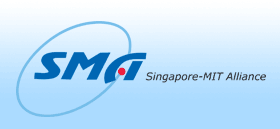Project Abstract:
Although various bonding methods have been developed for flip
chip assembly, most of them cannot be applied to ultra-high density
interconnections for the next generation. Direct metal bonding is a
promising candidate for solving all the above problems. Presently,
most direct metal bonding is done by thermosonic methods, where
ultrasonic energy is applied to lower the bonding temperature and
pressure. Although thermosonic bonding is an attractive choice,
there are distinct disadvantages. For example, it is difficult to control
the ultrasonic energy transmission. Small deviations from planarity
between the bonding tool and the stage can result in non-uniform
ultrasonic energy distribution. Another potential problem is silicon
cratering, which results from excessive ultrasonic vibration. This
project is to develop a direct metal bonding method at low
temperatures and low pressures for hybrid integration, build up a
model on the interfacial kinetics of bond formation, and carry
reliability studies on direct metal direct bonding for fine-pitch flip
chip and waferscale 3-d interconnections.
|


